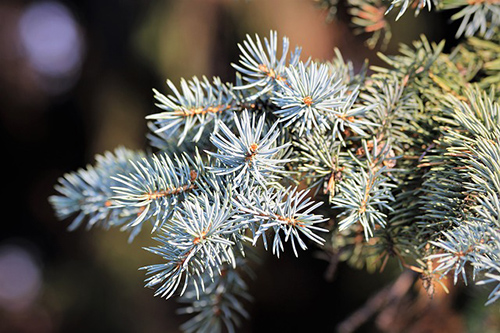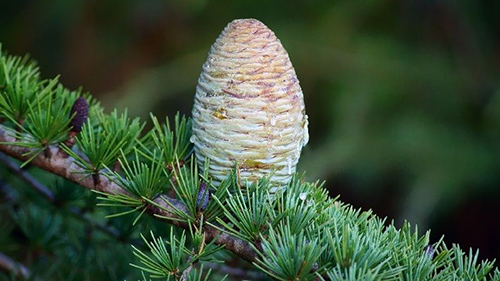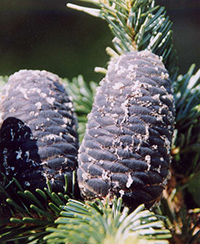Contents
The magnificent silver fir tree could ideally be called “Doyen of the forests.” It deserves attention for its excellent geometrical appearance and extraordinary lifetime, up to 800 years. During all this time, the silver fir tree fills the forest air with its fresh turpentine aroma. It is beneficial for people suffering from bronchitis and asthma and pleasing while strolling around the forests.
Today, the silver tree turpentine is being substituted by the pine tree since this is easier to harvest. Though its properties are very similar, the fir tree’s turpentine is usually more aromatic than the pine tree.
The resin of the fir tree, or turpentine, accumulates in spring under the bark and the buds. When the bark is cut, the resin flows, a liquid as fluid as oil, whose aroma resembles that of lemon but sour-flavored. This resin can be distilled, thus obtaining turpentine essence or turps.

Healing Properties and Warning
The whole plant contains tannin, essential oil, turpentine, and provitamin A. Turpentine is an oleoresin, which in external use has the following properties:
- Balsamic, antiseptic, and expectorant: It is recommended for respiratory airway afflictions, including sinusitis, tracheitis, bronchitis, pneumonia, and asthma. It eases mucus expulsion and regenerates the mucus membrane covering the respiratory airways.
- Revulsive (attracts the blood to the skin, decongesting the internal organs and tissues), antirheumatic, and vulnerary (heals wounds and bruises). It eases rheumatic aches, sciatica, lumbago, and torticollis. Reduces the inflammation of the sprained joints, as well as bruises and muscular pains in general. It also cleans infected wounds and skin sores.
- When taken orally, fir tree turpentine or its essence acts equally well on the respiratory organs. It also has diuretic and urinary antiseptic properties and is used to prevent the formation of calculi and sands in the urinary tract.
WARNING! The inhalation or ingestion of excessive doses of turpentine or its essence can irritate the central nervous system, especially in children.
Silver Fir Tree Scientific Facts

- French: Sapin blanc.
- Spanish: Abeto blanco.
- Environment: Mountainous regions of Central and South Europe. In America, same similar species grow.
- Description: A tree of the Pinaceae family, growing up to 50 meters high, with a straight trunk, smooth, greyish bark, male and female flowers on the same tree, pine cones of around five centimeters, which, when ripe, let the scales and the seeds fall. Its aroma resembles that of lemon, and its taste is sour.
- Parts of the plant used medicinally: The buds and the resin (turpentine).
How to use Silver Fir

- Infusion with 30-40 g of buds per liter of water, drinking three or four cups daily. The buds of the silver fir tree are sticky due to their significant turpentine content, especially during spring.
- Turpentine or its essence: Three to five drops, three times a day.
Externally: - Turpentine or its essence is applied in baths (alleviating those suffering from rheumatism or asthma), frictions, inhalations, and vapor inhalations.
Canadian Fir Tree
In North America, the Canadian fir tree grows from whose resin the so-called Canadian balm is obtained. This balm has the same properties as silver fir turpentine; thus, their medicinal applications are the same. Besides, the Canadian balm is used in microscopic laboratory examinations due to its unique optical characteristics.
DISCLAIMER: All content on this website is presented solely for educational and informational objectives. Do not rely on the information provided as a replacement for advice, diagnosis, or treatment from a qualified medical expert. If you are pregnant, nursing, or have any preexisting medical concerns, talk to your doctor before using any herbal or natural medicines.
REFERENCES
- George D. Pamplona-Roger, M.D. “Encyclopedia of Medicinal Plants.” George D. Pamplona-Roger, M.D. Encyclopedia of Medicinal Plants. Ed. Francesc X. Gelabert. Vols. 1 San Fernando de Henares: Editorial Safeliz, 2000. 292,293. Print. [silver fir tree]
- WebMD https://www.webmd.com/vitamins/ai/ingredientmono-323/european-silver-fir
- RxList https://www.rxlist.com/supplements/fir.htm
